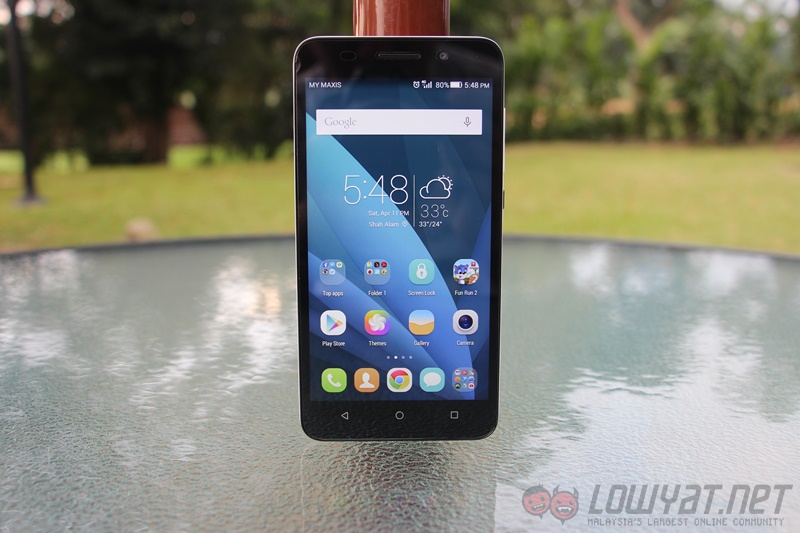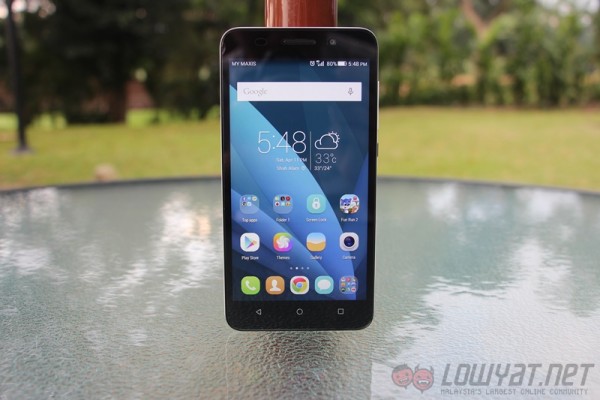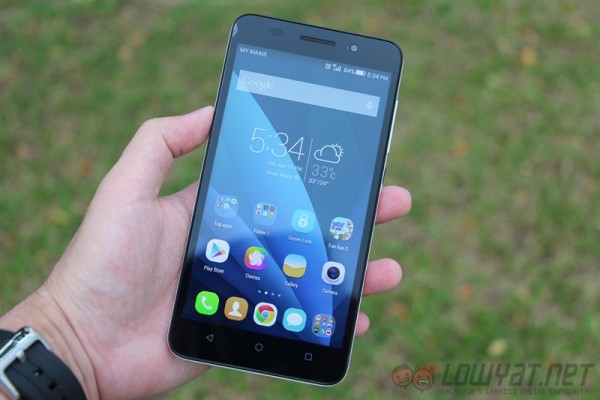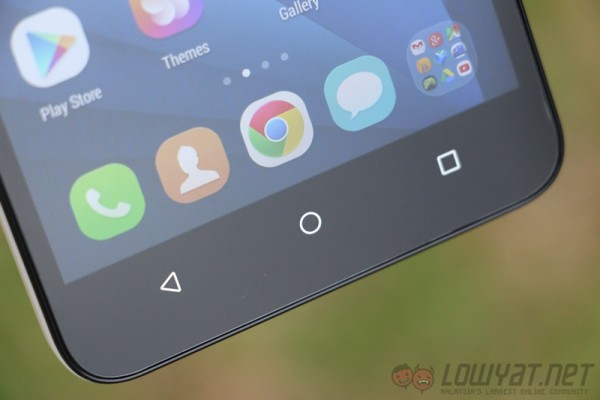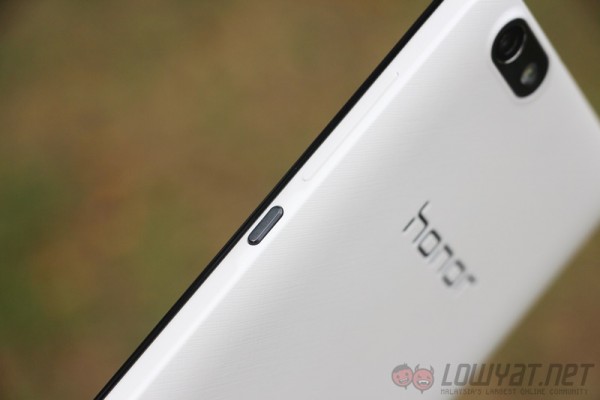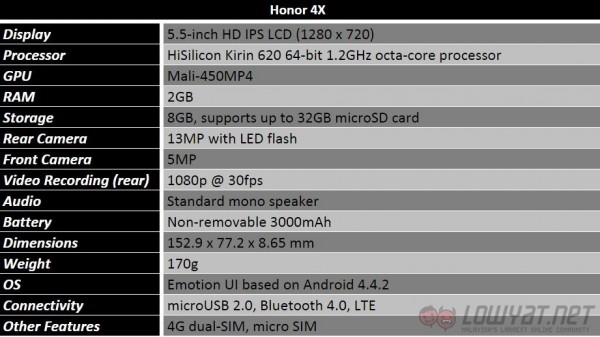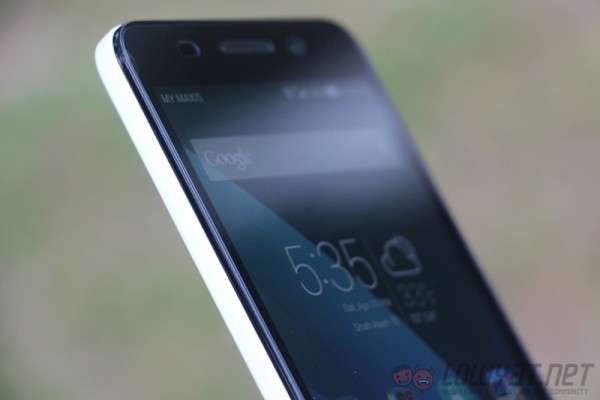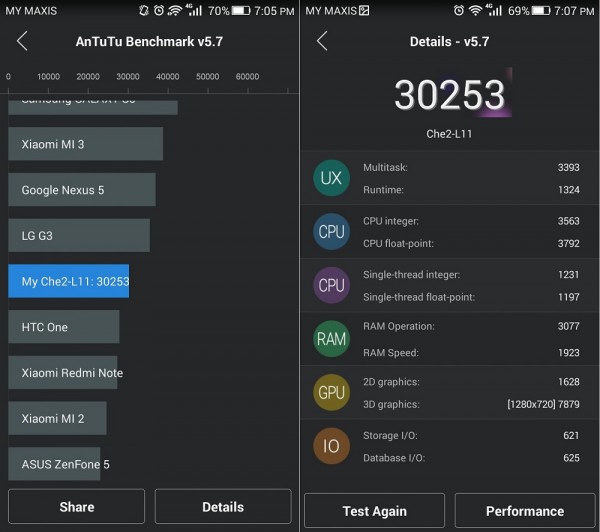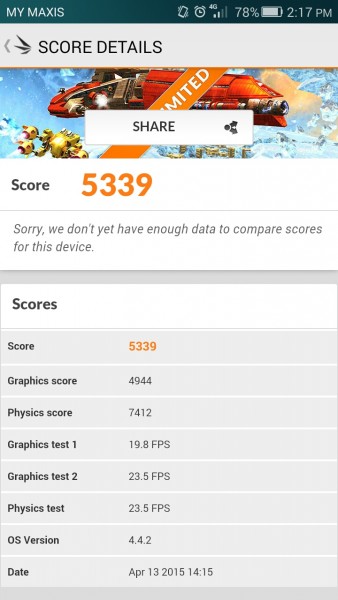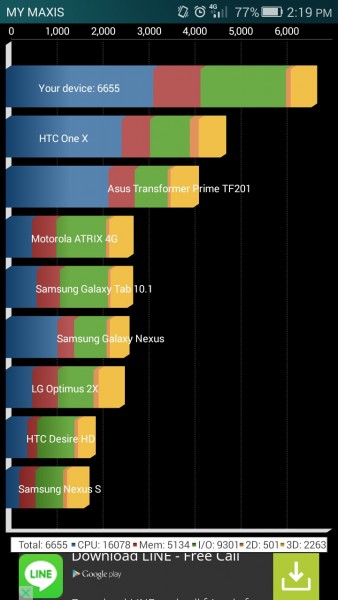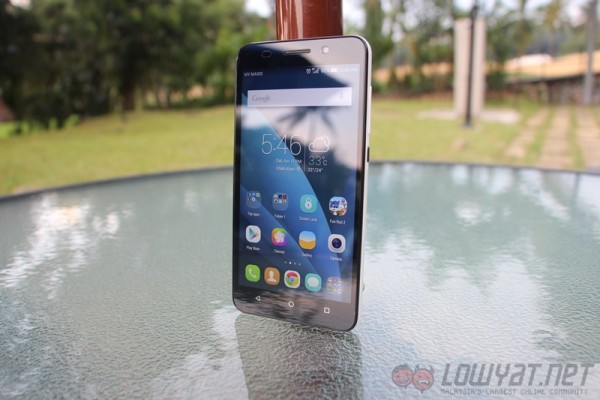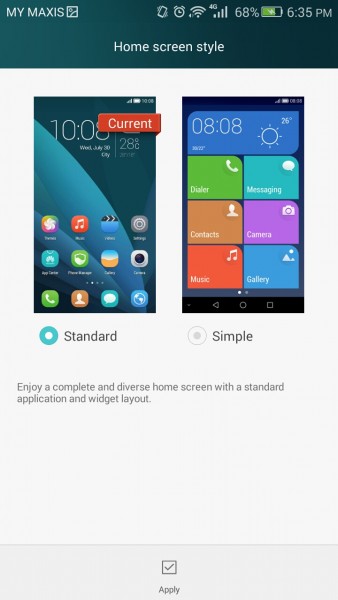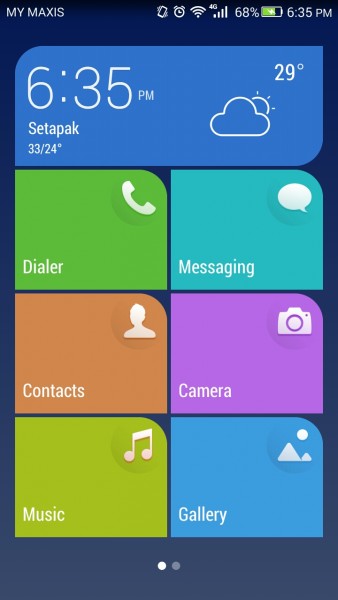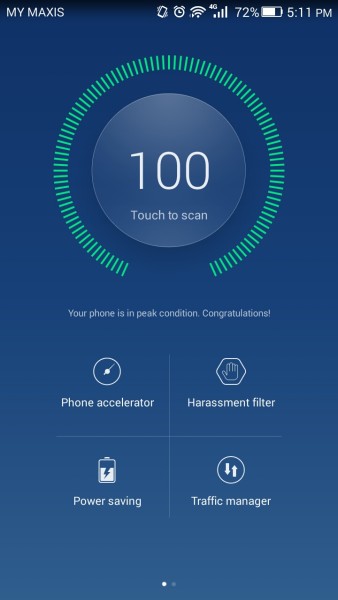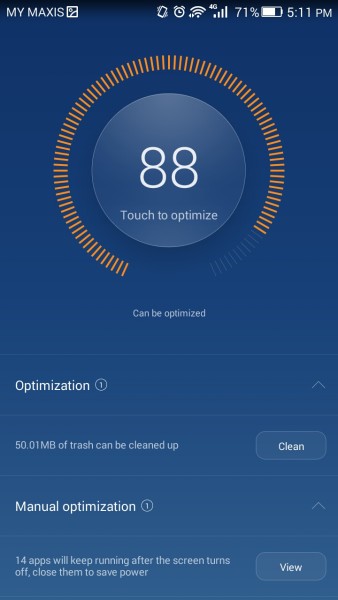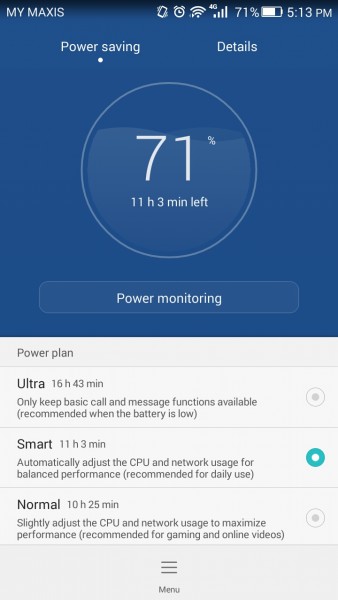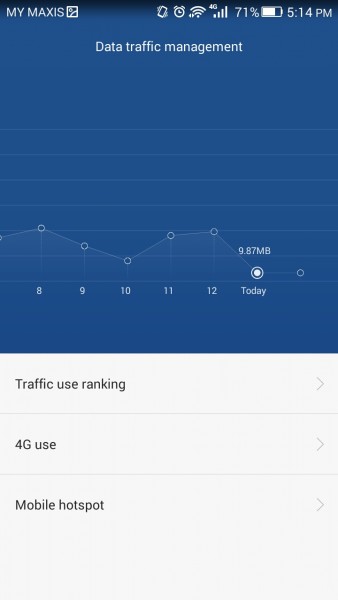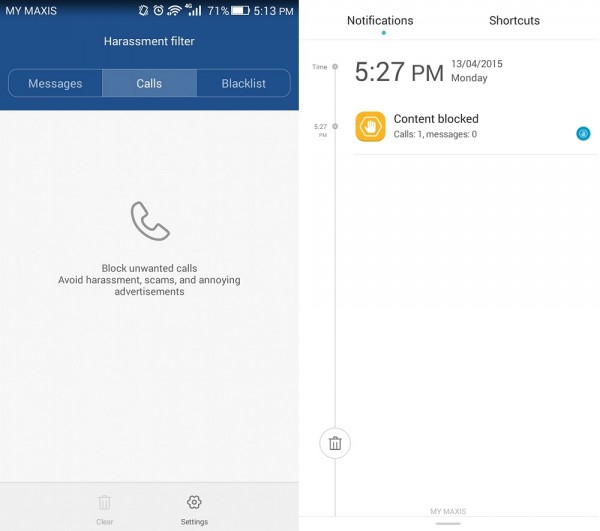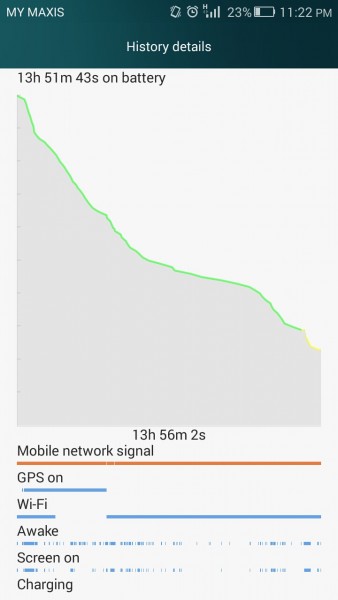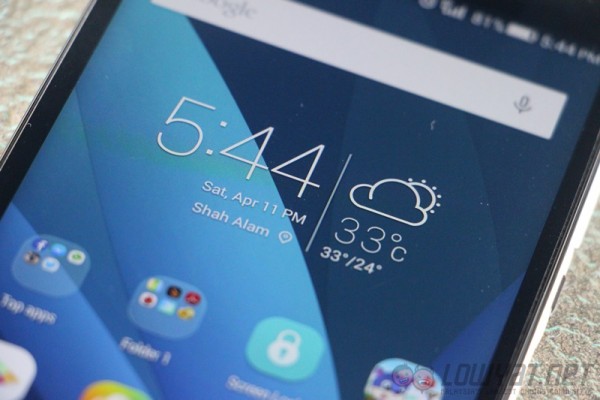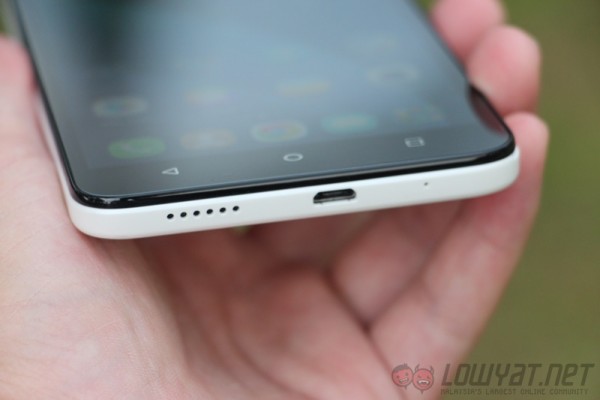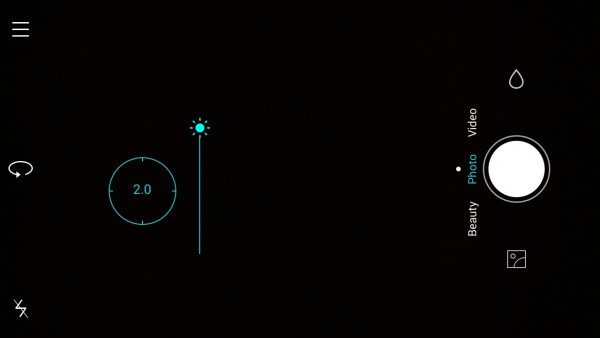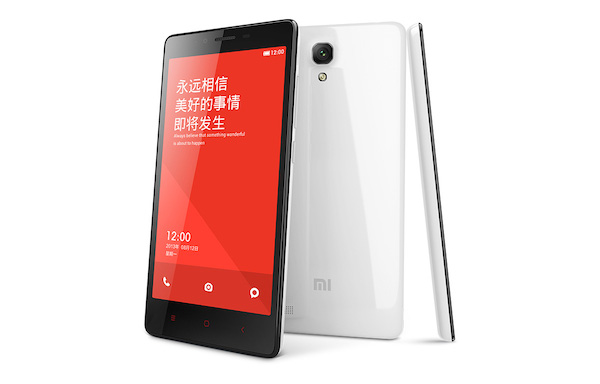Honor, a sub-brand of Huawei, definitely turned more than a few heads when it unveiled the Honor 3C. More recently, the Honor 6 is also quite a noteworthy device, boasting flagship hardware with a very affordable price tag of RM999 – well, RM1,059 now due to GST. That being said, how did the Honor 4X fare? Can this RM619 smartphone live up to its siblings’ popularity?
FIRST IMPRESSIONS
The Honor 4X is definitely a big smartphone. Boasting a 5.5-inch 720p display, it’s not exactly ideal for one-handed usage. After all, it is a phablet. That being said, it’s not impossible to use it with only one hand, but you’ll have to be a little creative to press the back button that’s located on the bottom left side of the phone (unless you’re a leftie of course).
In terms of build quality, there’s nothing much to shout about. It’s decently put together with minimal creaking from the back cover when pressure is applied to the smartphone. Speaking of which, I do rather like the texture of the back cover. It definitely gives the affordable smartphone a touch of finesse.
However, I just don’t get why phone manufacturers can’t make their phones less slippery. Although I’m a fan of the Honor 4X’s textured back cover, it somehow makes the smartphone that much more slippery. The phone’s plastic sides don’t help much to improve the grip either.
In terms of button placement, Honor decided to place the volume rocker and the power button on the same side of the Honor 4X. Normally, I wouldn’t approve of this as it is very easy to accidentally lock the phone when you want to lower down the volume instead. The Honor 4X, however, is an exception. The lock button doesn’t protrude as much as the volume rocker, making it rather easy to differentiate between the two buttons. Still, I would’ve preferred for these buttons to be placed on different sides of the device.
Nitpicking aside, the Honor 4X is surprisingly very, very zippy. I have to be honest: I was really sceptical of the HiSilicon Kirin 620 octa-core processor that’s powering the device. After spending a good amount of time with it, I’m rather impressed by its performance, especially for a smartphone at this price point.
HARDWARE
The hardware of the Honor 4X is pretty typical of any mid-range Android device. However, at this price point, a 3,000mAh battery, 2GB of RAM and 4G dual-SIM support are very pleasant surprises. Although a 1080p display would have been nicer for a smartphone with a 5.5-inch display, a 720p panel is more than reasonable for an RM619 smartphone.
When it comes to gaming, I was genuinely surprised by how well the Honor 4X runs demanding games, which makes sense seeing how it only has to render games at 720p. Sure, it wouldn’t offer any mind-blowing frame rate when you play very demanding games, but it is quite a capable smartphone to game with.
The only real issue that I have with the Honor 4X’s specification is its software, which is still based on Android 4.4 although Android 5.0 Lollipop has already been released for more than five months now. However, seeing how its running on Emotion UI rather than a stock version of Android, it’s understandable.
BENCHMARKS
SOFTWARE
Typical of any Chinese Android skin, Emotion UI doesn’t have an app drawer. That being said, it’s not really that big of a deal, seeing how apps can be placed into folders to keep the home screen neat. To be honest, I rarely access apps with an app drawer anyway, so the absence of it is a non-issue for me, although some will certainly disagree.
Normally, I’m very critical when it comes to versions of Android other than stock, but with Emotion UI, I was really impressed by it. It offers a smooth experience with minimal to no lag when browsing through the home screens and switching between multiple apps. Honestly, I can’t tell if it’s Emotion UI or the Kirin processor that contributes to the smooth experience. Regardless, it was a breeze to use the Honor 4X.
If you’re new to the Android platform, you can even change the home screen style to the Simple design, which basically changes the overall look of the home screen to look a lot like a Windows Phone due to the tile design. Personally, I’m much more comfortable with the conventional home screen.
Although I’m quite fond of Emotion UI now, it isn’t exactly perfect. Like many other manufacturer’s version of Android, it does have several bloatware. Thankfully (and surprisingly), there’s not too many of them. In fact, of them is rather useful: the Phone Manager app.
There are four main categories in this app: Phone Accelerator, Harassment Filter, Power Saving, and Traffic Manager. Phone Accelerator, as the name suggests, simply “optimises” the smartphone and closes unnecessary apps that are running in the background.
Power Saving, on the other hand, has three different modes to choose from. The Smart setting (which is the default) is essentially the balanced power setting. The Normal setting maximises performance, while the Ultra setting only allows calls and messages to be activated. The Traffic Manager basically allows you to see your data consumption.
The Harassment Filter is the most interesting feature of the Phone Manager app. With it, you can blacklist specific numbers or any phone number that is not in your list of contacts from calling or messaging you. Every blocked phone call or message can then be viewed through the app itself. Very useful.
BATTERY LIFE
With a 3,000mAh battery juicing up the Honor 4X, it’s easy to get at least a day’s worth of battery life out of it. I had absolutely no trouble getting through a typical day of heavy web browsing, instant messaging, light gaming, and occasional GPS navigating.
If you’re a very light smartphone user, I bet the Honor 4X can last up to two days. There was actually an instance where I didn’t charge it up at the end of a day (because I forgotten), but I still managed to get about half a day worth of battery life the following day. Take note that I am quite a heavy smartphone user, so it’s plenty impressive.
DISPLAY
The display of the Honor 4X is adequate for its asking price. Colours are nice and vibrant, and texts are pretty sharp. Sure, a 1080p display would have been better, but it would probably drive the price up. I’m just happy the display isn’t anything below 720p, in which case it would be unacceptable.
If you don’t like the colour temperature of the Honor 4X’s display, you can actually adjust it according to your liking. Adjusting the display to be colder would make the whites appear blue, while tuning the display to be warmer would make the whites appear yellow.
AUDIO
I don’t really have anything to complain about the Honor 4X’s mono speaker. It gets pretty loud, and it doesn’t crackle at maximum volume either. If I had to nitpick, the position of the speaker could have been better. It gets really annoying when the speaker grille is covered when I’m watching a video or playing a game in landscape mode.
CAMERA
So far, the Honor 4X has been pretty impressive in most aspects. Unfortunately, its affordable price tag makes sense when the camera is put to the test. Although it boasts a 13MP rear camera, the performance is somewhat mediocre. As expected for smartphone at this price point, it doesn’t perform well in low-light conditions. With appropriate lighting, however, things get better, but colour reproduction is still pretty washed out. Don’t expect the Honor 4X to rival any flagship smartphone’s camera performance.
The camera UI is simple and easy to get used to. Every settings are where they should be, and I rather like the option to adjust the brightness of the shot before it’s actually taken. I simply have to tap on the “sunlight” icon after tapping to focus on a specific area, and I can then adjust the brightness away. Very convenient.
However, I did encounter a particularly odd bug. There were a few instances where the pictures that I have taken were not saved. I did not manage to replicate this issue often enough for it to be a cause for concern, but it’s an issue that’s worth mentioning. Hopefully it’s merely a minor bug; I would hate snapping a good picture just to find out that it wasn’t saved.
SAMPLE IMAGES
COMPETITION
Among its competition, the Honor 4X is easily one of the easiest Android smartphones to recommend. In terms of bang for your buck, there are not many smartphones that can rival it, except for maybe one close competitor: the Xiaomi Redmi Note 4G.
Even though it’s one of the closest competitors to the Honor 4X, the Redmi Note 4G has several disadvantages, such as a slightly higher retail price of RM625, lack of 4G dual-SIM support, and the fact that it is thicker and heavier than the Honor 4X.
The Redmi Note 4G, however, has a bigger battery capacity of 3,100mAh that is removable. Software-wise, MIUI and EMUI each have its fair share of fans, and without directly comparing both of these smartphone in terms of software fluidity and experience, it’s hard to say which has the better version of Android.
That being said, it’s not entirely fair to compare the Honor 4X against the Redmi Note 4G, seeing how Xiaomi’s phablet is after all last year’s device. Until Xiaomi releases an update to the Redmi Note 4G, the Honor 4X will remain as one of the best value for money Android phablet available in the current market.
CONCLUSION
For RM619, it’s almost a no-brainer to recommend the Honor 4X to anyone that’s looking to buy an Android phablet. It offers a very fluid experience, a great battery life, respectable performance, and 4G dual-SIM support which is pretty rare, especially at this price point.
However, the Honor 4X’s camera performance isn’t the best out there, but the same can be said about other smartphones that are similarly priced. In any case, I will not hesitate to recommend the Honor 4X to anyone. It certainly lives up to the Honor 3C and Honor 6’s reputation as one of the most impressive smartphones at their respective price points.
Follow us on Instagram, Facebook, Twitter or Telegram for more updates and breaking news.


